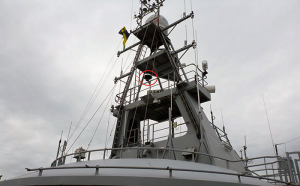World’s First Wireless Network at Sea
 Norway is the first nation in the world to implement maritime broadband communication on ships and planes in public service. The system enables exchange of information that can be crucial in limiting damage when accidents occur.
Norway is the first nation in the world to implement maritime broadband communication on ships and planes in public service. The system enables exchange of information that can be crucial in limiting damage when accidents occur.
The Norwegian companies Kongsberg Seatex and Radionor have teamed up to develop Maritime Broadband Radio (MBR). In contrast to previous systems, MBR is highly stable and with extensive reach. Among other capabilities, MBR enables streaming of HD-video. MBR does not require an Internet connection to connect units in the network, though it is possible to transfer data from the network using Internet.
The Coastal Administration and NOFO (Norwegian Clean Seas Association for Operating Companies) are the first in the world to deploy the Norwegian-developed and produced innovation. The Coastal Administration will install MBR on all its oil recovery vessels, and on ten additional vessels with oil recovery equipment on board. NOFO will do the same with all its oil recovery vessels. MBR is already installed on the surveillance aircraft LN-KYV, a joint initiative between the Coastal Administration, NOFO and the Norwegian Coast Guard.
In the event of a critical oil spill, MBR will enable significantly faster and higher quality exchange of information between the various units engaged in a response effort. Images, maps and video can be transferred instantaneously, and response can be initiated based on a shared, real-time awareness of the situation.
“This is a significant improvement that allows us to communicate with all units participating in an oil recovery mission, and share the data without an Internet connection. MBR allows us to respond faster with the right actions,” says Kjetil Aasebø, Senior Advisor in the Coastal Administration.






